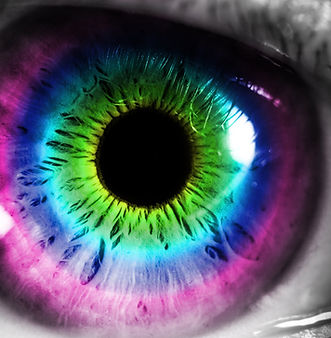EMOTIONAL DATA
The Science Behind
Color & Mood
There is a growing body of empirical evidence that supports the use of color therapy (specific wavelengths) to induce physiological & psychological changes. Here, we will discuss quantitative research from accredited institutions and published scientists.
.png)
.png)
CURRENT BIOLOGY
How Does Color
Affect Your Brain?
In a recent paper published in Current Biology, researchers were able to show that each color elicits a unique pattern of neural activity. In this study, he focused first on the brain’s response to a color, rather than on the color each of his study subjects verbally described.
Color impacts us on a
Social, Psychological,
Biological & Quantum level.

Munsell Color Theory
Based on a three-dimensional model in which each color comprises the three attributes listed above: hue, value and chroma. The color system is set up as a numerical scale with visually uniform steps for each of the three-color attributes. Each color has a logical and visual relationship to all other colors, but it is much easier to understand in a three-dimensional model.

Associative Network Theory
Suggests our brain contains an associative network or an interconnected web of knowledge where each node represents a part of the whole concept. In these networks, each circular node represents a unit of association, whether it’s an emotion (happiness), sensory experience (smell of the ocean) or semantic meaning (the word “beach”).

Ecological Valence Theory
According to the EVT, we develop preferences for colors based on our emotional experiences with those colors over time. The more enjoyment and positive effect an individual receives from experiences with objects of a given color, the more the person will tend to like that color. Put simply, nature is full of color. Even Darwin took notice of this, as he heavily relied on “Werner’s Nomenclature of Colors” to support his species descriptions.
From Psychology to Neuroscience
Published scientists agree that:
"Color can influence our emotions & moods."
Prof. Stephen Westland
Chemistry
Leed University
United Kingdom
"Color can influence our other senses."
Prof. Charles Spence
Neuroscience
Oxford University
United Kingdom
"Color can influence
our heart rate."
Prof. Axel Schafer
Physics
Institute of Experimental Physics
Austria
"Color can influence our attention & creativity."
"Color can influence our sleep quality."
"Color can influence
our purchase behavior."
Prof. Dianne Smith
Architecture
Perth University
Australia
Prof. Charles A. Czeisler
Biology
Harvard Medical School
United States
Prof. Rajesh Bagchi
Marketing
Virginia Tech University
United States
"Color is perceptual as it
construct our predictive mind."
"Color is data
that provides
context to our memory."
"Color is energy that
can stimulate our
nervous system."
Department of Clinical & Social Science University of Rochester
Institute of Psychology
University of Lausanne
Color Science & Technology
Leeds University
United Kingdom

.jpg)
.jpg)
